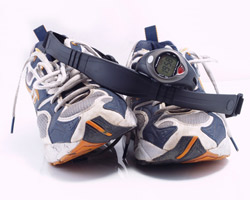Target Heart Rate Zone

If you want to get the best from your workouts it is essential to know your Target Heart Rate Zone. Knowing your Target Heart Rate Zone allows you to customize your workouts to fit your goals.
Whether you are looking to lose loss, improve overall fitness, or train for a race, knowing how hard you are working is essential to your ultimate success.
 There are certain parameters within which we have to work, and the ultimate determining factor is your maximum heart rate. Everyone has a maximum heart rate, a speed beyond which their heart cannot beat. For humans, this is typically around 220 beats per minute, although this decreases with age. Once you know your maximum heart rate, you can calculate your Target Heart Rate Zones as a percentage of your Maximum Heart Rate (MHR).
There are certain parameters within which we have to work, and the ultimate determining factor is your maximum heart rate. Everyone has a maximum heart rate, a speed beyond which their heart cannot beat. For humans, this is typically around 220 beats per minute, although this decreases with age. Once you know your maximum heart rate, you can calculate your Target Heart Rate Zones as a percentage of your Maximum Heart Rate (MHR).
How Does Heart Rate Change With Age?
The general rule of thumb is to take one beat off your maximum for each year you have lived – so if, for example, you are thirty, your maximum heart rate will be around 190 beats per minute.
Once you have worked out your maximum heart rate, then you need to know what your target range will be – working within your target range will ensure that your workouts allow you to reach your goals as quickly and efficiently as possible.
What Should Your Heartbeat Be When Training?
For all CV (Cardio) workouts, your Target Heart Rate Zone will be 60-80% of your maximum. It is crucial to stick within that range. Why? Because if you are working out below the 60% range you are not working out hard enough to activate your cardiovascular system, while working above that range for an extended period of time, or too frequently, is too stressful, and can lead to injury and breakdown.
The exception to the 60-80% rule is HIT – High Intensity Training. HIT – which includes interval training and high intensity strength training, is designed to have you dip in and out of the elevated (80%+) heart range, with recovery periods in between.
This type of high intensity training is essential for increasing speed (for example, for a race), and will also increase your metabolism (the speed at which your body burns calories) in both the short term and the long term.
HIIT Burns Calories?
HIT is thus an essential tool for burning fat, as it forces your body to burn more calories on a sustained basis. However, it should be used judiciously – two to three times per week – whether your goal is increased speed or weight loss.
They key to any type of heart rate training is the ability to measure your heart rate accurately. And while it is possible to measure your heart rate manually – for example by feeling for your pulse at your wrist – it is far more effective to buy a heart rate monitor and get an accurate reading. Once you know your heart rate, you can ensure that every workout delivers the maximum benefit and helps you to achieve your fitness goals.




